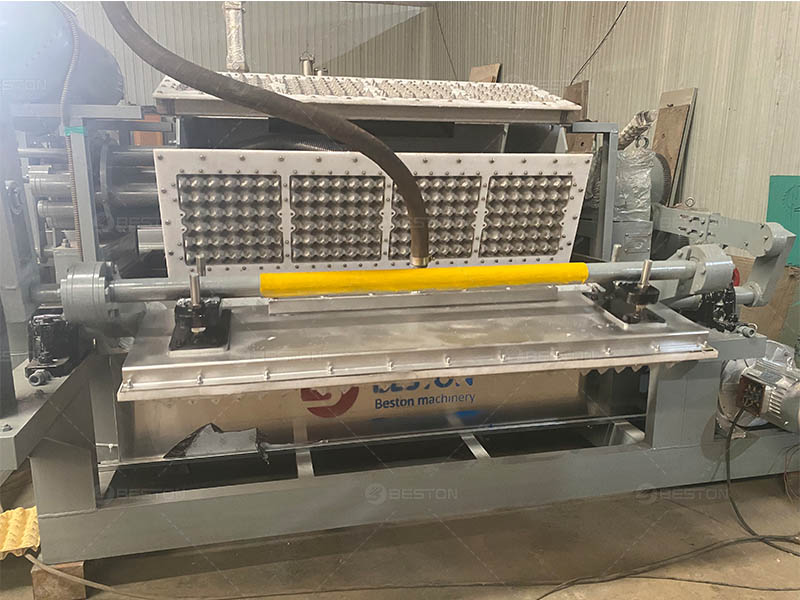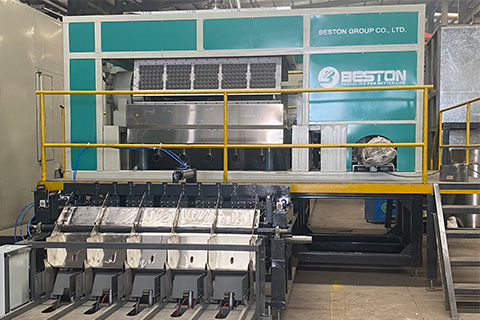The realm of pulp molding tray production is witnessing a surge in demand and interest, driven by environmental concerns, regulatory pressures, and the growing preference for sustainable packaging solutions. As industries seek alternatives to traditional plastic packaging, pulp molding machines emerge as a promising solution, offering versatility, eco-friendliness, and cost-effectiveness. In this exploration, we delve into the market dynamics and prospects for pulp molding tray production, highlighting key factors shaping its growth trajectory and investment potential.
Understanding Pulp Molding Machine Technology
At the heart of pulp molding tray production lies the paper pulp making machine, a sophisticated piece of equipment designed to transform recycled paper pulp into various packaging products, including trays, containers, and egg cartons. The pulp molding machine operates on a principle of vacuum forming, wherein a slurry of paper pulp is deposited onto molds, vacuum-formed into shape, and then dried to create sturdy and environmentally friendly packaging solutions.
Key Components of a Pulp Molding Machine
- Pulp Preparation System: Processes recycled paper materials into a slurry of paper pulp suitable for molding.
- Molding Station: Forms the paper pulp into desired shapes and configurations using molds and vacuum suction.
- Drying Chamber: Facilitates the drying and solidification of molded pulp products to achieve structural integrity.
- Automation and Control System: Controls and monitors the entire production process, ensuring precision and consistency in product quality.
- Mold Tooling: Configurable molds allow for the production of various tray designs and sizes to meet diverse packaging needs.
Market Drivers and Demand Dynamics
1. Sustainability and Environmental Awareness
The increasing awareness of environmental issues and the detrimental impact of plastic pollution have fueled demand for sustainable packaging alternatives. Pulp molding trays machine, such as egg tray machine, offer a compelling solution, as they are made from recycled materials, biodegradable, and compostable, aligning with the principles of circular economy and sustainable consumption.
2. Regulatory Compliance and Packaging Regulations
Stringent regulations and policies aimed at reducing plastic waste and promoting eco-friendly packaging solutions have prompted industries to seek alternatives to traditional plastic trays. Governments worldwide are implementing bans on single-use plastics and imposing taxes and levies on plastic packaging, creating a conducive regulatory environment for pulp molding tray production.
3. Consumer Preferences and Brand Image
Consumer preferences are shifting towards environmentally responsible products, driving demand for sustainable packaging solutions. Companies are increasingly incorporating pulp molding trays into their packaging strategies to enhance brand image, meet consumer expectations, and demonstrate corporate social responsibility.

Investment Opportunities in Pulp Molding Tray Production
1. Expansion of Production Capacity
Investing in paper tray making machine and production facilities presents an opportunity to capitalize on the growing demand for sustainable packaging solutions. Expanding production capacity allows manufacturers to meet increasing market demand, secure market share, and capitalize on economies of scale to reduce production costs.
2. Product Innovation and Customization
Innovation in product design and customization capabilities enables manufacturers to differentiate their pulp molding trays in the market. Investing in advanced pulp molding machine technologies and mold tooling allows for the production of unique tray designs, sizes, and configurations tailored to specific customer requirements and market segments.
3. Vertical Integration and Value-Added Services
Vertical integration along the packaging supply chain, from raw material sourcing to product distribution, enables companies to capture additional value and control quality throughout the production process. Offering value-added services such as design consultancy, packaging customization, and eco-friendly branding enhances customer loyalty and competitive advantage in the market.
Challenges and Mitigation Strategies
1. Raw Material Sourcing and Supply Chain Management
Ensuring a consistent and reliable supply of recycled paper materials is essential for uninterrupted pulp molding tray production. Developing strategic partnerships with paper recycling facilities, investing in waste paper collection infrastructure, and diversifying raw material sourcing channels mitigate risks associated with supply chain disruptions and price fluctuations. Beston Group provides you with efficient pulp tray production solutions.
2. Technological Innovation and Process Optimization
Continuous investment in research and development is necessary to drive technological innovation and process optimization in pulp molding machine technology. Enhancing energy efficiency, production speed, and product quality through automation, sensor technology, and machine learning algorithms improves competitiveness and sustainability in pulp molding tray production.

Conclusion
In conclusion, the market prospects for pulp molding tray production are bright, driven by increasing demand for sustainable packaging solutions, regulatory pressures, and shifting consumer preferences. Investing in advanced pulp molding machines and production facilities, coupled with innovation in product design and customization, presents lucrative opportunities for manufacturers and investors alike. By addressing key challenges, leveraging technological advancements, and capitalizing on market trends, stakeholders in the pulp molding tray production industry can position themselves for success in the evolving landscape of sustainable packaging.